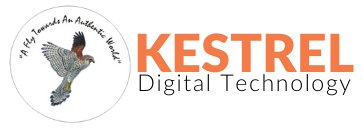Trademark Registration
Basically, a trademark is a “brand” or “logo” that you can use to distinguish your product from those of your competitors. Through trademark registration or you can say logo registration/brand registration, you can protect your brand or logo by restricting other people from using the same. For e.g. the logo of NIKE and their tagline JUST DO IT is a registered brand name. By trademarking your logo or brand, you are providing it protection as it is illegal to use the same logo or tagline. A registered trademark is an intangible asset for a business and is used to protect the company’s investment in the brand or symbol. After Trademarking your logo or brand, a registered TM number which works as trademark license is assigned within
a period of three days by Trademark department but it takes almost two years for it to be registered so that you can use to
use ® symbol with your brand name.
It is always advised to get Trademark registration or brand name registration because getting your company registered will not protect your brand against those who might initiate using identical or similar marks. Before trademarking, make sure to check trademarks availability and it should be your first priority if you want to start a company. Trademark public search is an important step before trademark registration. You need to do a close search for trademark name as it will help you to avoid future problems.
Trademark Objection
The trade mark status in the Indian Trade Mark Registry website shows as “Objected” when the Registrar/Examiner has raised one or more objections in the Examination Report. After scrutinizing the trade mark application, objections may be raised by the Registrar/Examiner under Sections 9 and 11 of the Trade Marks Act. Section 9 objections are made when the Registrar/Examiner considers the trade mark to be descriptive of goods / generic / laudatory /indicating quality or nature of goods. In order to overcome the Section 9 objection, it is necessary to show that the trade mark is inherently distinctive. Section 9 objection can also be overcome if the trade mark has acquired a distinctive character as a result of extensive use. For this purpose, it is necessary to submit a user affidavit along with cogent evidences to show that the trade mark has acquired distinctiveness. Section 11 objections are made by the Registrar/Examiner when there is an identical/similar trade mark in respect of identical/similar goods/services already on record in the Trade Mark Registry. In such cases, the Registrar/Examiner issues a computer generated Search Report with the list of conflicting marks.
When the trade mark application is objected, it is stipulated that a response should be filed within one month from the date of receipt of Examination Report. The Trade Mark Registry usually uploads the Examination Report in the online records without any intimation to the applicant or its agent. Therefore, it is desirable to submit the response within one month upon knowledge of Examination Report being uploaded in the online records. In cases where the Examination Report is received from the Trade Mark Registry, it is important that the response is submitted within one month from the date of receipt of examination report. Otherwise, the trade mark application will be abandoned by the Trade Mark Registry due to lack of prosecution. When the trade mark is objected, it is imperative that effective arguments are put forth by submitting a suitable response to the examination report in order to overcome the objections. Once written submissions are made, the Registrar/Examiner either accepts the trade mark or posts a hearing for allowing arguments to be put forth in person. In most cases, objections can be overcome if properly represented before the Registrar.
Copyright Registration
Copyright registration can be obtained for original works of art, literature, books, music, films, cds and computer programs.
It covers the following:
1. Literary works such as books, literature, technical drawings, computer programs, computer databases
2. Musical works or Audio Visual work
3. Artistic works including logos, photographs, pictures
What is a patent?
Patents protect inventions and improvements to existing inventions.
Patent is a monopoly right granted by the Government to exclude others from exploiting or using a particular invention. This
exclusive monopoly granted by a Patent is provided in return for the inventor disclosing the details of the invention to the public.
Therefore, the patent is a monopoly right which offers exclusivity to the patentee to exploit the invention for 20 years after which it
falls to the public domain.
While filing a patent for your invention, there are several critical aspects to be followed especially in drafting the claims, which
define the scope of the invention. Drafting patent specification is an art by itself, and requires the expertise of skilled professionals
in this field.
Types of patent applications :
A) PROVISIONAL APPLICATION
A provisional application is a temporary application which is filed when the invention is not finalized and is still under
experimentation.
Advantages of filing a provisional application
1. Applicant gets 12 months’ time to fully develop the invention and ascertain its market potential
2. Helps to establish “priority” right over the invention
3. Enables the applicant to use the term "patent pending” on their product
4. Less expensive to prepare and file the application
5. Enables the applicant to file International applications and claim priority within 12 months.
However, in order for the patent to be granted, a provisional application must be followed by a complete specification within 12
months. Moreover, the provisional application should be sufficiently detailed and must be drafted very carefully to ensure that the
priority rights are secured for your invention.
B) ORDINARY APPLICATION OR NON-PROVISIONAL APPLICATION
An application for patent filed in the Patent Office without claiming any priority of application made in a convention country or
without any reference to any other application under process in the office is called an ordinary application. An ordinary application
must be accompanied with a complete specification and claims.
C) CONVENTION APPLICATION
An application for patent filed in the Patent Office, claiming a priority date based on the same or substantially similar application
filed in one or more of the convention countries, is called a convention application. In order to get convention status, an applicant
should file the application in the Indian Patent Office within 12 months from the date of first filing of a similar application in the
convention country.
D) PCT INTERNATIONAL APPLICATION
A PCT Application is an international application governed by the Patent Cooperation Treaty, and can be validated in upto 142
countries.
Advantages of filing a PCT Application
1. A single international patent application can be filed in order to seek protection for an invention in up to 142 countries throughout
the world.
2. The priority date obtained by filing a PCT application is internationally recognized, and has an effect in each of the countries
designated.
3. It gives the application 30/31 months to enter into various countries from the international filing date or the priority date, and
therefore gives the applicant more time to assess the viability of the invention.
4. Delays the expenses associated with applying for a patent in various countries
5. Provides an International Search Report citing prior art, which gives an indication to the applicant whether the invention is novel
and innovative.
6. Provides an option for requesting an International Preliminary Examination Report, the report containing an opinion on the
patentability of the invention.
7. The International Search Report and International Preliminary Examination Report, allows the applicant to make more informed
choices early in the patent process, and to amend the application to deal with any conflicting material, before the major expenses of
the national phase of the patent process begin. It also gives the applicant a fair idea on the patentability of the invention before
incurring charges for filing and prosecuting the application in each country.
E) PCT NATIONAL PHASE APPLICATION
When an international application is made according to PCT designating India, an applicant can file the national phase application
in India within 31 months from the international filing date or the priority date (whichever is earlier).
F) PATENT OF ADDITION
When an applicant feels that he has come across an invention which is a slight modification of the invention for which he has
already applied for or has obtained patent, the applicant can go for patent of addition if the invention does not involve a substantial
inventive step. There is no need to pay separate renewal fee for the patent of addition during the term of the main patent and it
expires along with the main patent.
G) DIVISIONAL APPLICATION
When an application made by applicant claims more than one invention, the applicant on his own or to meet the official objection
may divide the application and file two or more applications, as applicable for each of the inventions. This type of application,
divided out of the parent one, is called a Divisional Application. The priority date for all the divisional applications will be same as
that claimed by the Parent Application (Ante-dating)
Design registration
A design registration is used to obtain protection for the features of shape, configuration, pattern or ornaments.
The design may consist of three-dimensional features, such as the shape or configuration of an article, or of two-dimensional
features, such as patterns or ornaments.
The words “pattern” and “ornament” refer to something that is embossed, engraved or placed upon an article for the purpose of
decoration.
Note: Design registration does not protect any technical features of the article to which it is applied. (See Patent)
Advantages of design registration
A design is what makes an article attractive and appealing. Hence, it adds to the commercial value of a product and increases its
marketability.
When a design is protected, the owner i.e. the person or entity that has registered the design is assured an exclusive right against
unauthorized copying or imitation of the design by third parties. This helps to ensure that the design of the products is exclusive to
the owner and the customer can at once identify the design of the product as that of the

